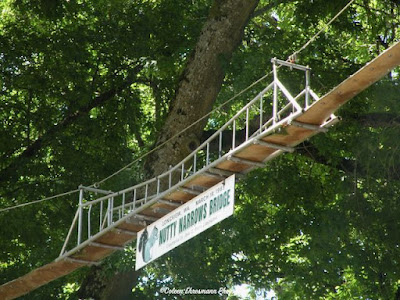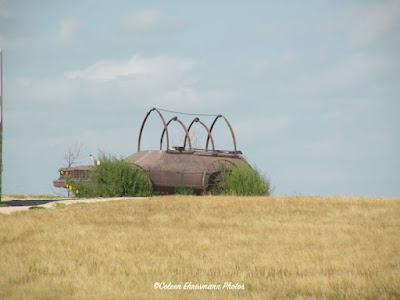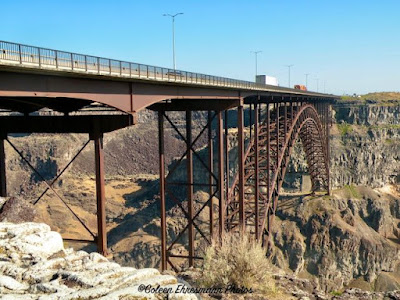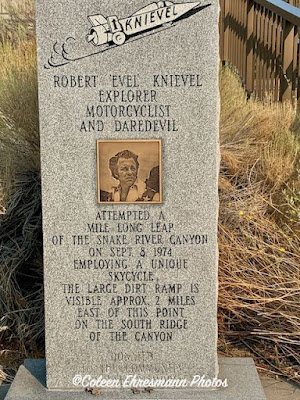As you know we recently visited friends in Long Beach, Washington on our month-long camping and caching adventure. The four of us, Jon & Sherry and Hubby and I have had some great geocaching adventures in SD, AZ, OH, MN and now OR and WA have been added to the list.
Sherry took us to the community of Longview to do some special geocaching. And it was! The highlight, other than the walk-in Ammo can was our tour of the Squirrel Bridges. Yes, you read that right. Bridges for squirrels.
This is the bridge that was the beginning, Nutty Narrows Bridge. (The original has been replaced due to wear and tear and has been moved several times)The Nutty Narrows Bridge was built in 1963 by a local builder, the late Amos Peters, to give squirrels a way to cross the busy thoroughfare without getting flattened by passing cars.
One day Peters found a dead squirrel with a nut still in its mouth, and that day’s coffee break discussion turned into squirrel safety. The group of businessmen cooked up the squirrel bridge idea and formed a committee to ask the City Council’s blessing. The Council approved, and Councilwoman Bess LaRiviere jokingly dubbed the bridge Nutty Narrows.
The name stuck!
After architects Robert Newhall and LeRoy Dahl designed the bridge, Donald Kramer completed structural engineering, and Amos Peters and Bill Hutch started construction. They built the 60-foot bridge from aluminum and lengths of fire hose. It cost $1,000.
It didn’t take long before reports of squirrels using the bridge started. Squirrels were even seen escorting their young and teaching them the ropes. The story was picked up by the Associated Press, and Nutty Narrows became known in newspapers all over the world. Animal lovers in London, Minnesota and California sent newspaper clippings, fan mail and bags of nuts to Peters. One man wrote, Little men take time to cater to big people who might do them good. Only big men pause to aid little creatures.
In 1983, after 20 years of use, Peters took down the worn-out bridge. Repairs were made and crosspieces were replaced. The faded sign was repainted and in July 1983, furry guests from Disneyland (Chip and Dale and Mickey Mouse), local dignitaries, and 300 children rededicated the bridge.
Most of the squirrel bridges are along Lake Sacajawea, a park in the city of Longview with big old trees along the north side of the lake and along the street across from the park.
The aluminum bridge was designed by a PUD engineer and built by a mechanic to deter what Dietz called "the No. 1 cause of outages in Cowlitz County: squirrels." It is the eighth bridge added to the squirrel bridges in Longview.





















































